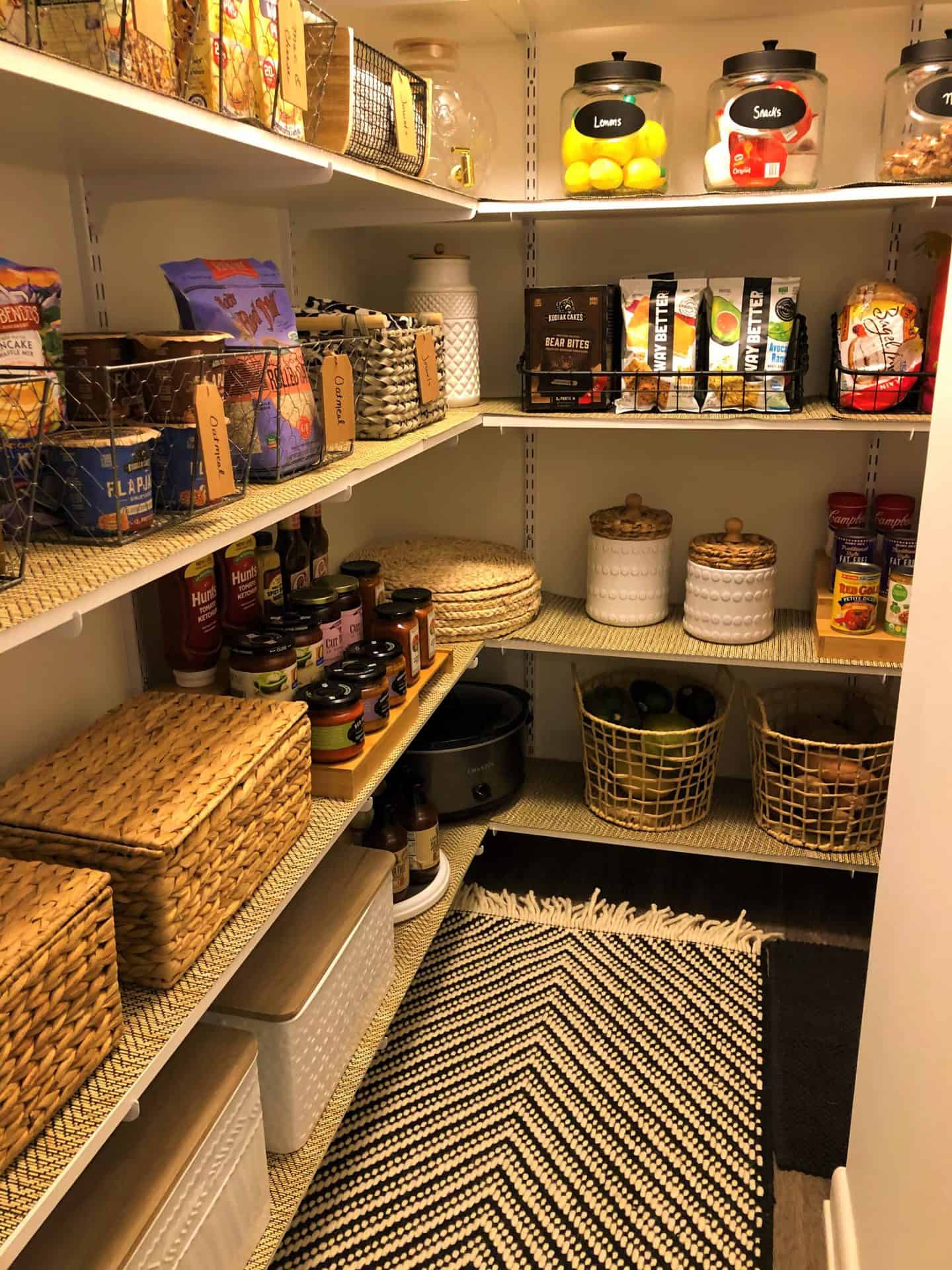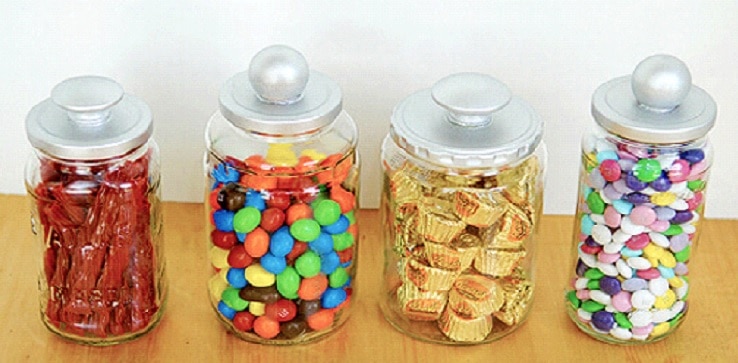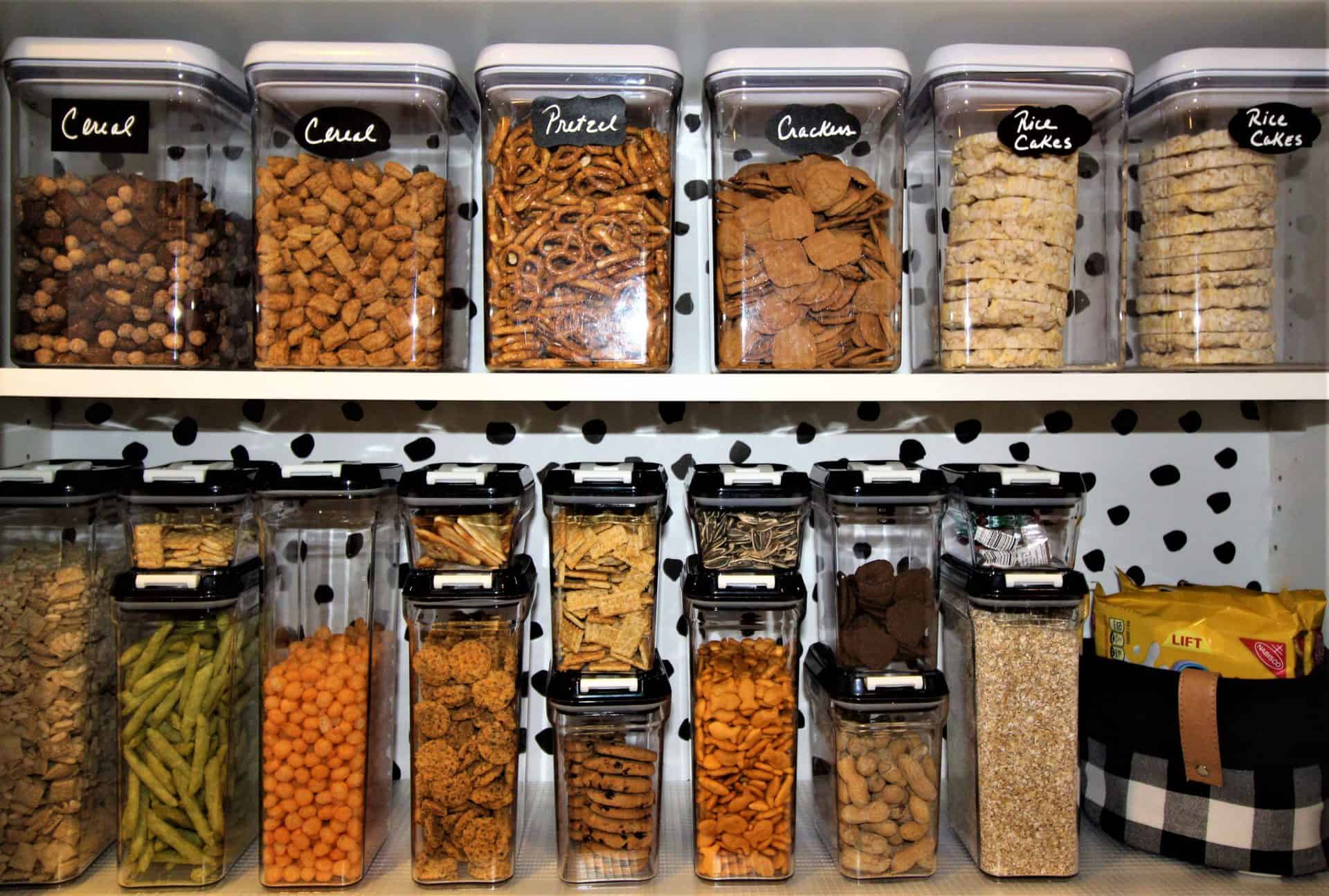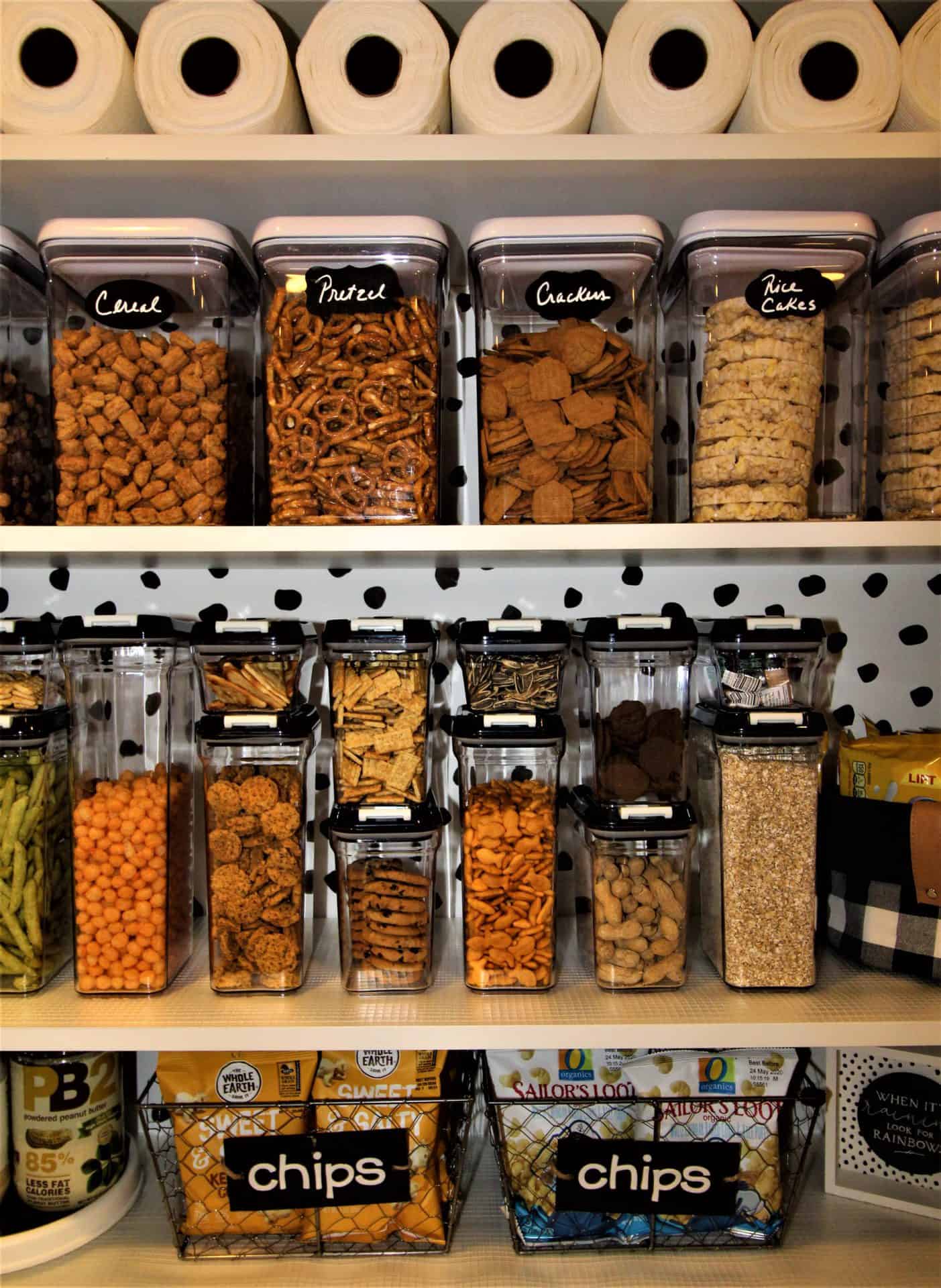
Top 10 Kitchen Pantry Tips
1.
Repurpose well-made clear glass or plastic food containers and use them to decant dry goods with flimsy packing, or in lieu of opaque containers. Foods such as dried pasta, rice, oats, cornmeal, baking soda, baking powder, flour, sugar, candy, chocolate chips, seeds, nuts, and so on are good examples of foods to transfer into old pickle jars or plastic screw-top licorice containers.

2.
Group similar items together, so they are easy to find and keep tabs on amounts. For example, condiments, cereals, rice, noodles, and so on. You can also group like packaging together, such as boxes, cans, bottles, and jars. Then within each packaging type, further divide them according to the kind of food such as soup, ketchup, salad dressing, and the like.

3.
Decanting is a big deal in home organizing, and this term means emptying product from the store-bought package and placing it into a container such as a clear jar organizer. My experience with clients has convinced me to decant only certain items such as foods that come in flimsy packaging with long shelf lives. You will understand why I decided to suggest this to my clients once you read the following pros and cons to doing so, which are as follows:
Pros
#1
People that buy in bulk benefit from decanting. They can keep a reasonable amount in the cabinet or pantry and house the overstock or majority elsewhere, thus saving valuable space and money.
#2
Eliminates the guesswork on how much you have left of an item because you can visually see through a clear container versus an opaque box.
#3
Doorless cabinets, open shelving, exposed pantries, or personal pleasure are solid reasons to decant and enjoy the beauty of attractive storage arrangments.
#4
You can gain more space when using a set of different-sized containers that can stack versus odd-shaped food packaging and awkward bags.
Cons
#1
It is time-consuming to decant, which creates an added step when putting groceries away.
#2
Sometimes children have a tough time accessing particular containers. Namely, the airtight containers can have tricky lids to remove. Glass also presents a safety concern with curious kids around.
#3
Remembering expiration dates becomes more difficult unless you are diligent about labeling the container with such dates.
#4
Refilling half-empty containers are problematic. Ideally, you need to dump the contents into another vessel and first fill with the new food, so it is at the bottom. Then pour the older food on top, so it gets used first. You should clean the container beforehand and add another expiration label to keep track.
#5
Unless you are recording elsewhere, you no longer have access to the ingredient list, health facts or directions,
#6
Organizers are expensive, and a pantry full is a significant investment.

4.
When you have the depth and the proper space, consider removing your kitchen gadgets off the counters and move them into the pantry. Take things one step further by adding a countertop and electrical to use the appliances in your pantry.
5.
Keep healthy snacks at eye level and kid’s healthy treats where they can easily access to promote a proper diet. Hide the junk food on the high shelves or in opaque containers.
6.
Create zones if you have space, so things are easy to gather. Some good zone ideas are a school-lunch station, coffee bar, or breakfast shelf.
7.
Foods bought in multiples should store in a method, so the most current expiration date is front and center. Single file lines work best. It is good to place a sticker on the opened package, even jot down the date when opened. You don’t want to have several opened boxes or jars of the same item.

9.
Think about porous foods like pastries, bread, and flour. Such items pick up odors from strong spices like curry. Take the necessary steps to use airtight containment for things that are porous and release pungent odors.
10.
Make sure to use all the pantry space. Often pantries are underutilized because shelving is not correctly adjusted or corners are left empty. Measure all the space and find organizers that use all the space. A shelf has width, depth, and height, so use it all up. Awkward corners can use organizers like lazy susans so items can get accessed at this location.


Super helpful! Reading to get ideas for putting my pantry back together this weekend after part one of our remodel. Thank you!
You are welcome, Michelle!!! XO